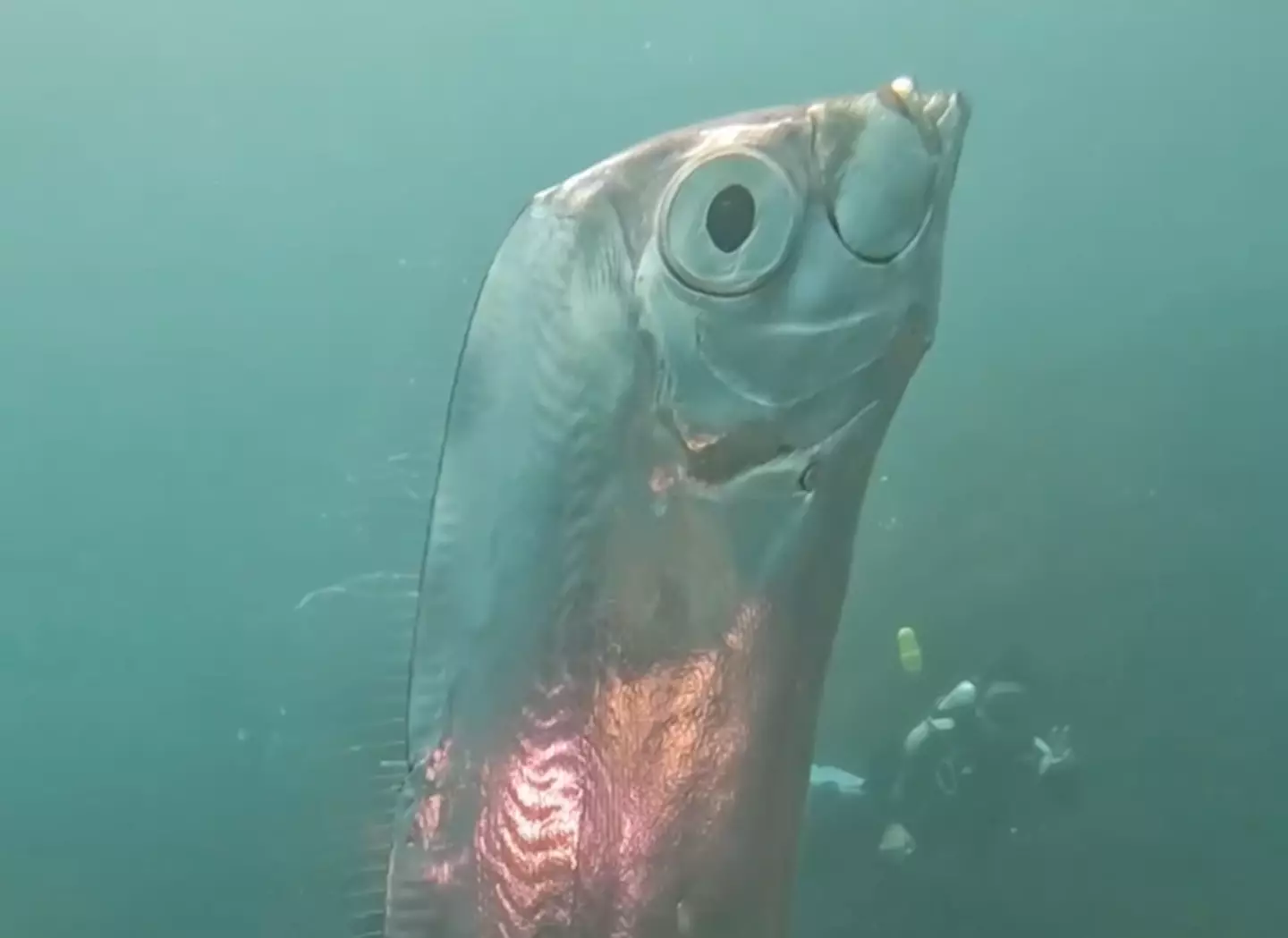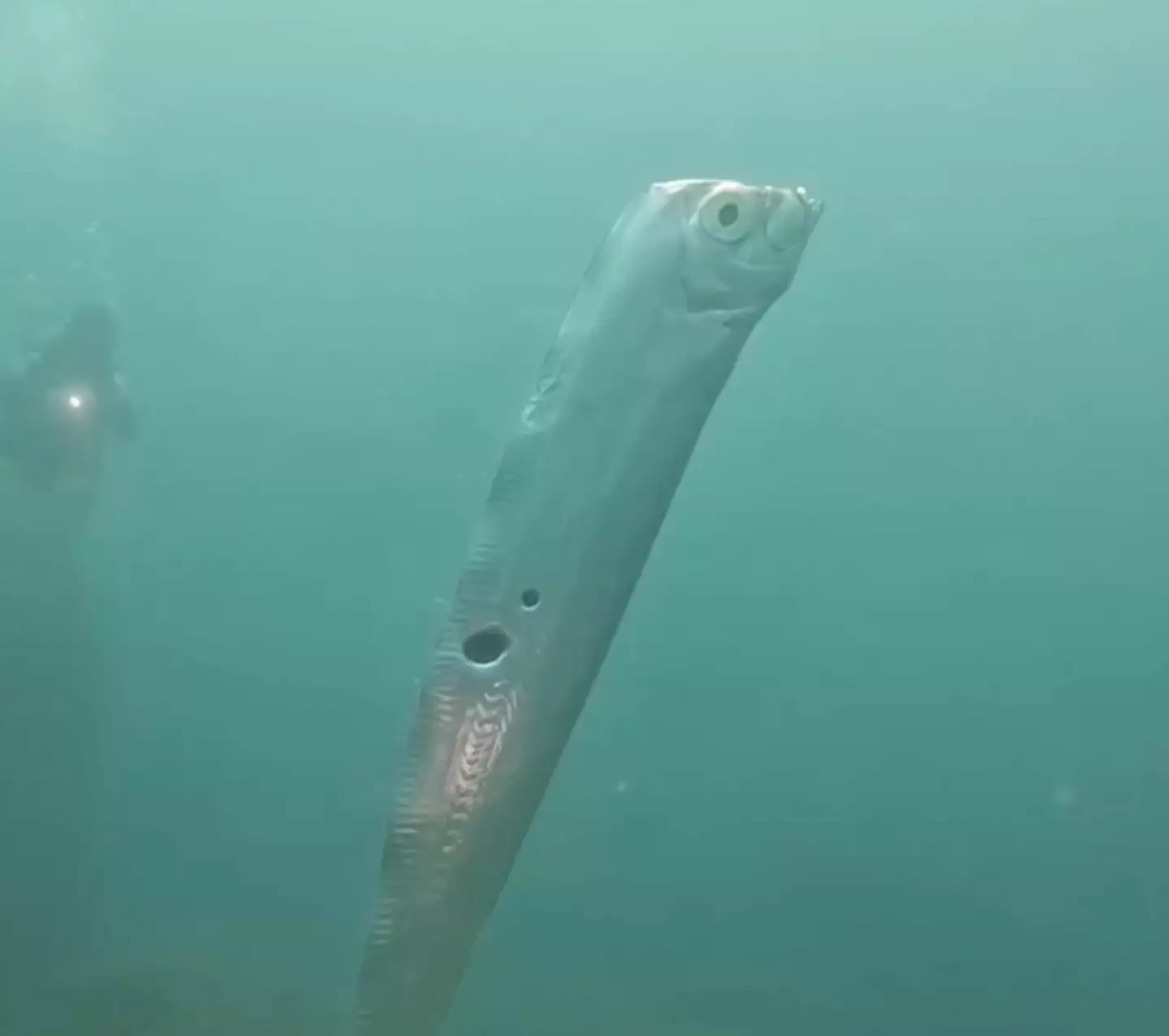We all know the classic signs of danger, right? I'm talking a single magpie, a black cat and a six-foot fish covered in holes.
What's that? That last one doesn't ring a bell?
I'll admit, a giant fish didn't immediately strike me as a red flag, either, but apparently it should have.
Advert
More specifically, we should be wary of a giant oarfish, and unfortunately, we know this because a group of divers have recently come across one.

The divers were exploring the ocean near Ruifang District in Taipei, Taiwan, when they encountered the bizarre sight, which they managed to capture on camera.
In the clip, the massive oarfish can be seen hanging, seemingly suspended, in the middle of the water. Two holes are clearly visible in the centre of its body, and it makes no effort to swim away when approached by the divers.
The fish certainly doesn't look particularly threatening, especially given its lack of attempt to attack the humans, but it's the danger that's been associated with the fish which raises concern.
Advert
The giant oarfish is colloquially known as an 'earthquake fish' or a 'doomsday fish', due to a theory that seeing one means some big, bad event is on its way.
Diving instructor Wang Cheng-Ru, who was behind the camera during the dive, identified the fish by its nickname when he described the encounter.

"I was diving with the group and we immediately recognised the earthquake fish. It was a very special encounter, as I've never seen one in real life before," he said.
The fish isn't necessarily just a sign of earthquakes though - especially in Japanese mythology, they are also believed to be an omen for tsunamis.
Advert
Wang went on to express belief that the holes in the oarfish's body 'probably came from a shark attack', and called attention to its reputation as he added: "I hope that this is not a bad omen."
Oarfish typically swim at a depth of 650 to 3,300 feet, meaning it's very rare to see them in the wild.
As a result, occasional sightings might be considered even more ominous - though Wang thinks the giant fish might have been near the surface of the ocean on this particular occasion because it was suffering, and maybe dying, from the holes in its body.
It's still an unfortunate situation, but hopefully the danger in this instance is limited to the fish's life, and not the rest of the world's.
Topics: Conspiracy Theory, Animals, World News